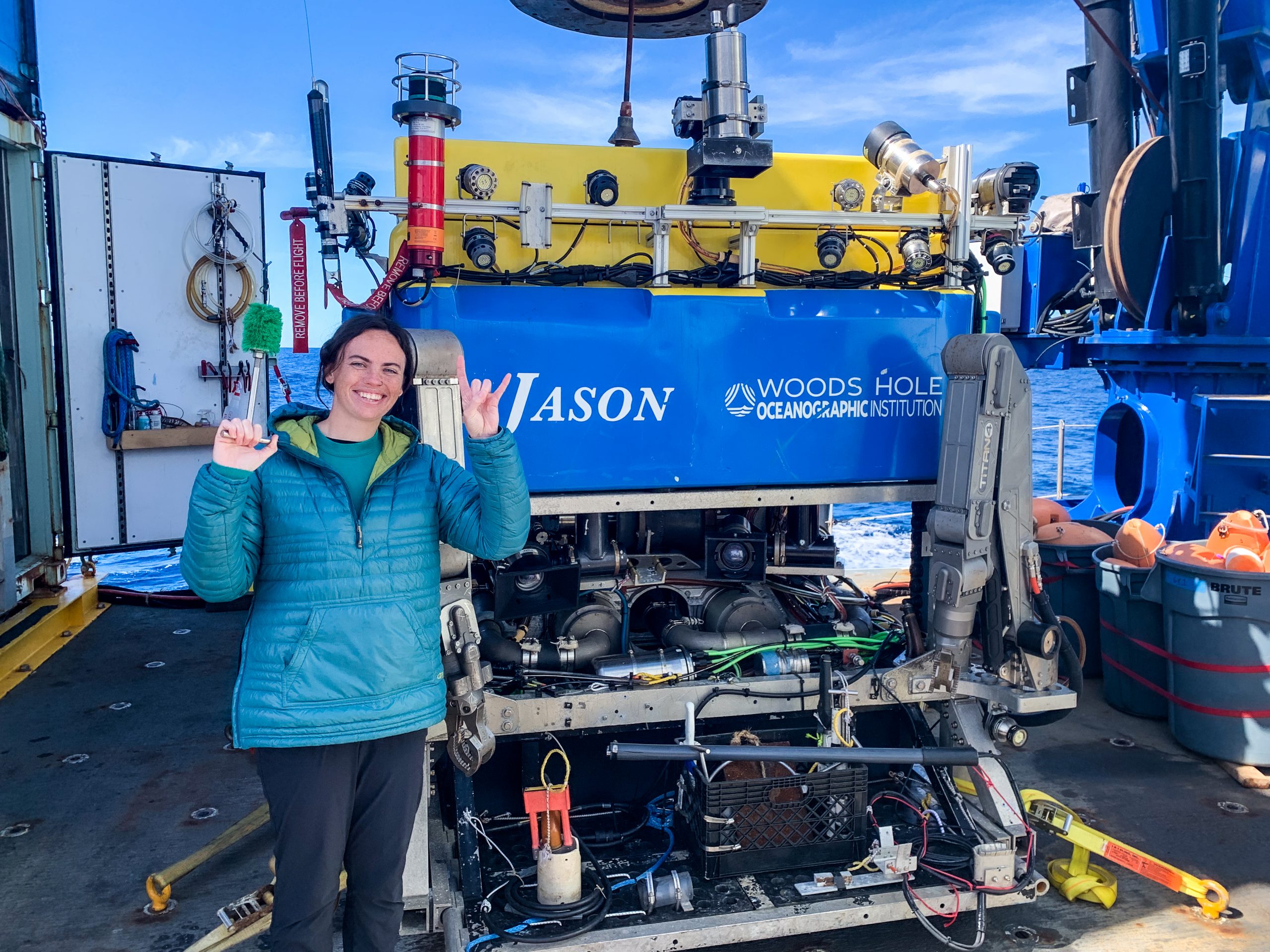Downloading Earthquake Data from the Bottom of the Ocean
By Kaitlin Schaible, Graduate Research Assistant



In March 2023, I traveled to Wellington, New Zealand with a group of UT scientists to study subduction zone processes at the Hikurangi subduction zone. The Hikurangi subduction zone is of particular interest to scientists due to the occurrence of slow slip events which occur every 1-2 years and have the potential to release accumulated strain that may otherwise be released in large earthquakes. Understanding slow slip events is crucial for developing seismic hazard models for New Zealand which help protect and prepare the public in the event of a large earthquake.
In order to better understand how these slow slip events occur, two CORK observatories were installed into the seafloor during a 2018 International Ocean Discovery Program (IODP) expedition. These observatories allow scientists to measure pressure and temperature as well as collect geochemistry samples from sites that are 100s of meters below the seafloor and are very challenging to access. Five years after the initial installation of these CORK observatories, I boarded the R/V Thomas Thompson with scientists from around the world and WHOI’s remotely operated vehicle (ROV) Jason and crew. Our primary objective was to collect pressure, temperature, and geochemistry data stored within the CORKs and re-deploy new sensors into the observatories.
It is extremely difficult to retrieve data and deploy new instruments at sites that are located multiple kilometers underwater. Thankfully, WHOI’s Jason crew are experts at accessing remote underwater sites with the ROV. As part of the scientific team, I worked with the Jason crew to retrieve the data and sensors from the CORK observatories. We then prepared new pressure and temperature sensors to be deployed. The temperature and pressure sensors are strung onto a long cable (over 100 meters) and lowered from the deck of the R/V Thompson all the way to the observatory on the seafloor. For a scale reference, this operation is like lowering a spaghetti noodle through the deep end of a pool and guiding it into a straw.
Overall, we successfully recovered pressure and temperature data that will be used to further study slow slip events and subduction zone processes. Participating on the research cruise was a great opportunity for me to collaborate with other scientists that are excited about studying earthquake processes, and it was amazing to see the scale and intricacies behind scientific ocean drilling and instrumentation. It is truly incredible that we are able to collect high resolution data from extremely remote sites, and this research will allow scientists to develop improved assessments of seismic hazard for the people of New Zealand.
The University of Texas at Austin
Web Privacy | Web Accessibility Policy | Adobe Reader

